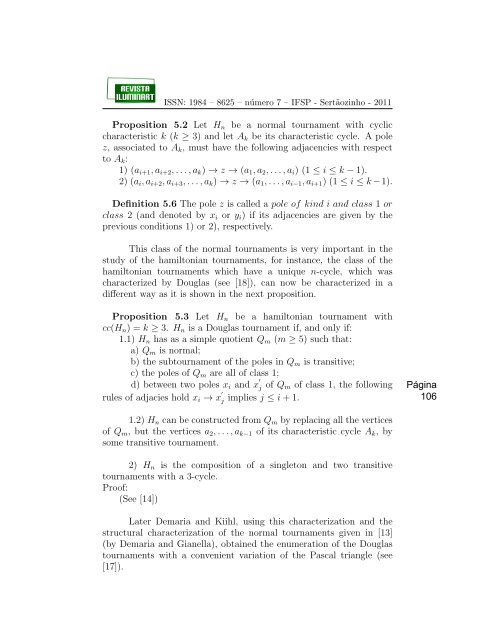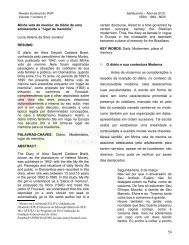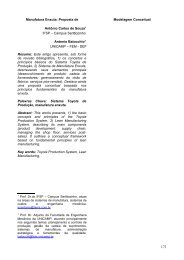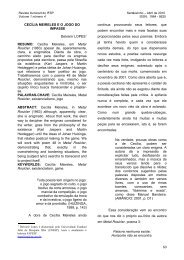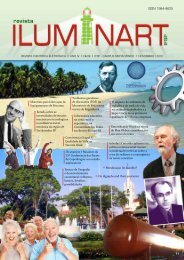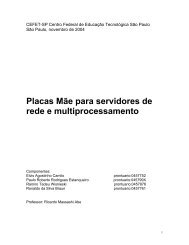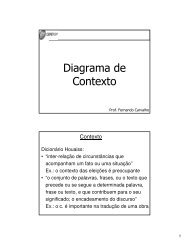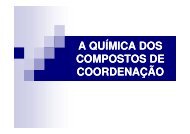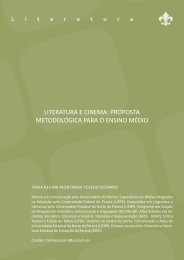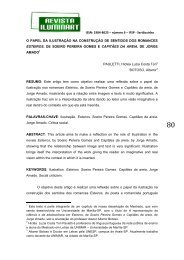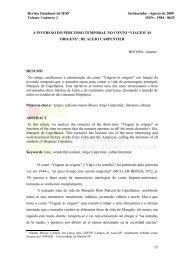Página 97
Página 97
Página 97
Create successful ePaper yourself
Turn your PDF publications into a flip-book with our unique Google optimized e-Paper software.
ISSN: 1984 – 8625 – número 7 – IFSP - Sertãozinho - 2011<br />
Proposition 5.2 Let Hn be a normal tournament with cyclic<br />
characteristic k (k ≥ 3) and let Ak be its characteristic cycle. A pole<br />
z, associated to Ak, must have the following adjacencies with respect<br />
to Ak:<br />
1) (ai+1, ai+2, . . . , ak) → z → (a1, a2, . . . , ai) (1 ≤ i ≤ k − 1).<br />
2) (ai, ai+2, ai+3, . . . , ak) → z → (a1, . . . , ai−1, ai+1) (1 ≤ i ≤ k −1).<br />
Definition 5.6 The pole z is called a pole of kind i and class 1 or<br />
class 2 (and denoted by xi or yi) if its adjacencies are given by the<br />
previous conditions 1) or 2), respectively.<br />
This class of the normal tournaments is very important in the<br />
study of the hamiltonian tournaments, for instance, the class of the<br />
hamiltonian tournaments which have a unique n-cycle, which was<br />
characterized by Douglas (see [18]), can now be characterized in a<br />
different way as it is shown in the next proposition.<br />
Proposition 5.3 Let Hn be a hamiltonian tournament with<br />
cc(Hn) = k ≥ 3. Hn is a Douglas tournament if, and only if:<br />
1.1) Hn has as a simple quotient Qm (m ≥ 5) such that:<br />
a) Qm is normal;<br />
b) the subtournament of the poles in Qm is transitive;<br />
c) the poles of Qm are all of class 1;<br />
d) between two poles xi and x ′<br />
j of Qm of class 1, the following<br />
rules of adjacies hold xi → x ′<br />
j implies j ≤ i + 1.<br />
1.2) Hn can be constructed from Qm by replacing all the vertices<br />
of Qm, but the vertices a2, . . . , ak−1 of its characteristic cycle Ak, by<br />
some transitive tournament.<br />
2) Hn is the composition of a singleton and two transitive<br />
tournaments with a 3-cycle.<br />
Proof:<br />
(See [14])<br />
Later Demaria and Kiihl, using this characterization and the<br />
structural characterization of the normal tournaments given in [13]<br />
(by Demaria and Gianella), obtained the enumeration of the Douglas<br />
tournaments with a convenient variation of the Pascal triangle (see<br />
[17]).<br />
<strong>Página</strong><br />
106


